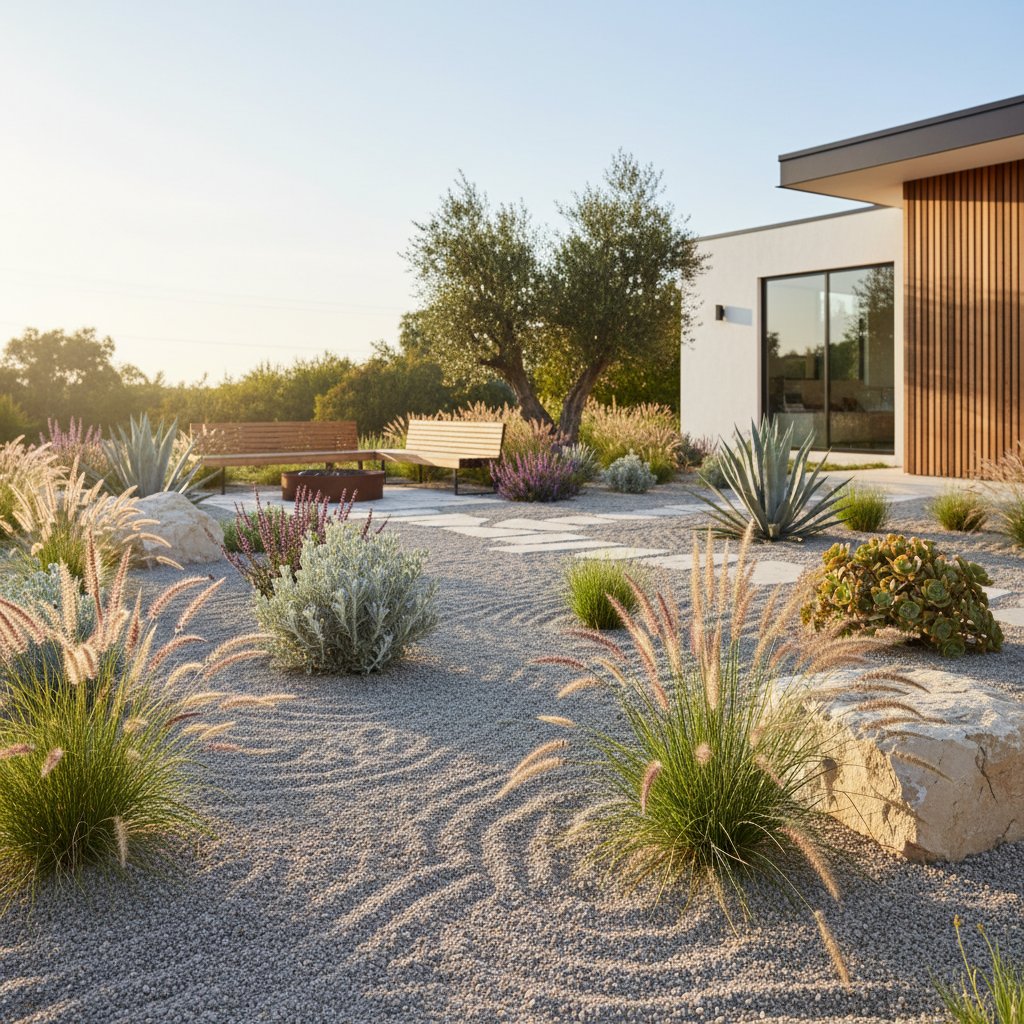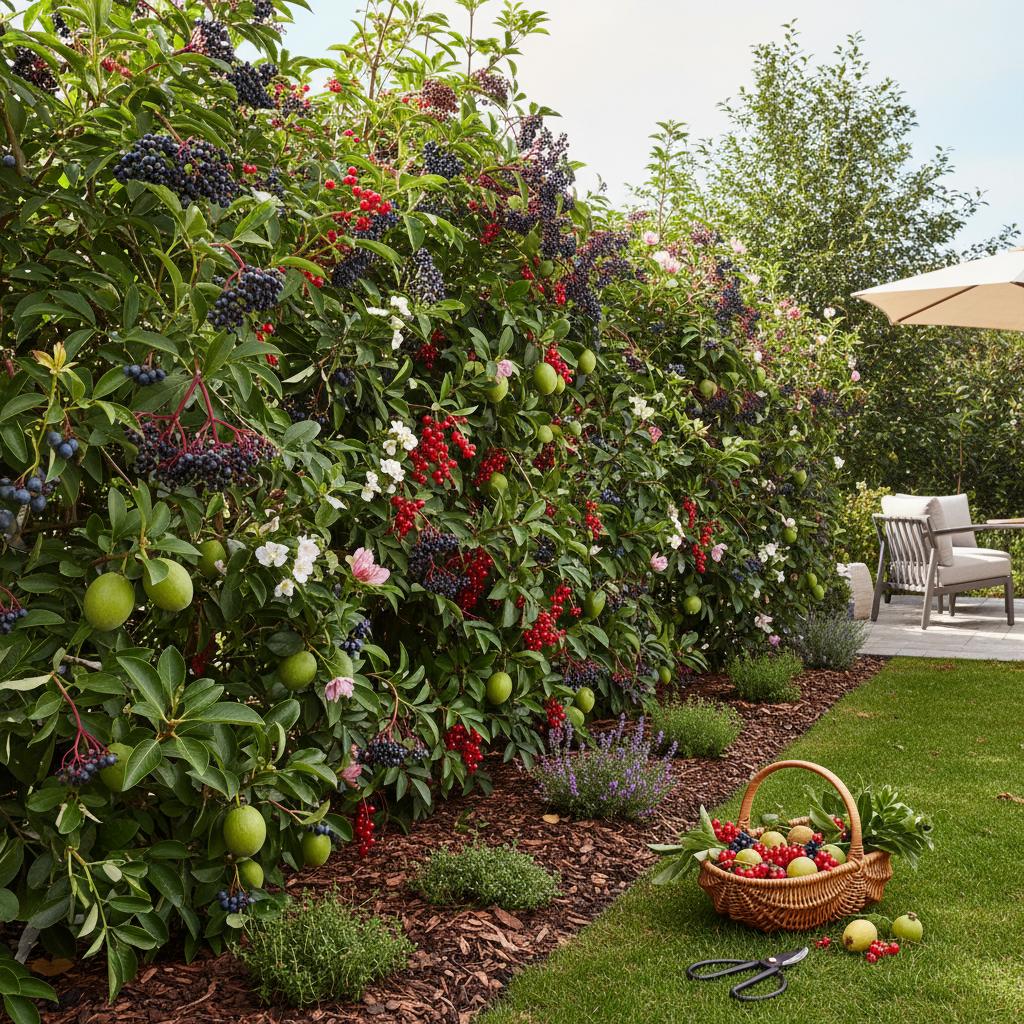The Rise of Low-Water Gravel Gardens in 2025
Many homeowners face the challenge of maintaining attractive yards amid water shortages and busy schedules. Lawns often demand constant irrigation and upkeep, while flower beds falter in intense heat. Low-water gravel gardens address these issues by prioritizing resilience and simplicity, delivering visual appeal with reduced effort.
These gardens integrate gravel as a base layer, paired with drought-tolerant plants that mimic natural, arid landscapes. The result is a serene space that conserves resources and evolves over time. Homeowners appreciate how such designs align with environmental goals without sacrificing style.
Redefining Garden Design
Conventional gardens rely on lush greenery that requires frequent watering and intervention. Gravel gardens shift this paradigm by embracing dry conditions and well-drained soils. Designers layer coarse gravel over prepared ground, creating a backdrop that highlights plant forms and textures.
Select gravel in sizes from 1/4-inch pea gravel for fine paths to 3/4-inch crushed stone for stability in planting areas. This material suppresses weeds, retains soil moisture, and reflects light to brighten shaded spots. The overall effect combines modern minimalism with organic flow, suitable for urban lots or expansive properties.
Assess Your Site Conditions
Start by evaluating sunlight patterns across your yard. Track how shadows shift from morning to evening, identifying full-sun zones ideal for heat-loving species. Test soil drainage by digging a 12-inch hole, filling it with water, and noting how long it takes to empty; aim for percolation within two hours.
Address poor drainage in clay-heavy soils by incorporating 2-3 inches of coarse sand or gypsum. Remove existing turf with a sod cutter, then clear debris to prepare a level base. Retain any compatible native plants to integrate seamlessly with your new design.
Design with Intention
Sketch your layout to incorporate natural contours rather than straight edges. Position plants in irregular clusters to foster a wild yet controlled appearance, ensuring pathways remain at least 3 feet wide for easy access. Focal points, such as a central boulder or birdbath, guide the viewer's eye and add structure.
Opt for gravel tones that harmonize with your surroundings: light quartz for reflective warmth or dark basalt for subtle contrast. Install a landscape fabric beneath the 2-4 inch gravel layer to prevent weed growth while allowing water passage. Compact the base with a tamper for longevity.
Select Drought-Tolerant Plants
Focus on Mediterranean and native species adapted to low humidity and poor soils. Evergreen herbs like lavender (Lavandula angustifolia) and rosemary (Rosmarinus officinalis) provide year-round structure and aromatic foliage. Incorporate thyme (Thymus vulgaris) as a low groundcover that releases scent when brushed.
Ornamental grasses such as festuca glauca offer blue-toned tufts for contrast, reaching 12 inches tall. Add perennials like echinacea purpurea for summer blooms in pink and purple hues, or salvia nemorosa for spikes of blue flowers that attract pollinators. Succulents including sedum spectabile bring fleshy leaves and late-season color.
Plant in spring or fall, spacing according to mature size: 18-24 inches for shrubs, 12 inches for perennials. Amend planting holes with grit for better aeration, then mulch lightly with gravel. Initial deep watering every 7-10 days establishes roots; taper to once monthly after the first season.
Implement Simple Maintenance
Gravel acts as a natural barrier, reducing weed emergence by 70 percent compared to mulched beds. Inspect quarterly to remove any seedlings by hand, and rake gravel smooth after storms. Prune herbs in early spring to encourage bushy growth, cutting back to 6 inches above ground.
Water established plants only during prolonged droughts, applying 1 inch deeply at the base to promote root depth. Divide overcrowded perennials every 3-4 years to refresh vigor. This minimal routine allows the garden to self-regulate, with plants filling spaces organically.
Enhance for Everyday Enjoyment
Incorporate functional elements to elevate usability. Place a teak bench amid taller grasses for a shaded reading spot, or add stepping stones embedded in gravel for defined routes. Terracotta planters with trailing verbena introduce vertical interest without overwhelming the palette.
Install path lighting with 12-volt LED fixtures spaced 5-6 feet apart to accentuate evening textures. Use timers for energy efficiency. These additions create a welcoming atmosphere that extends the garden's appeal into cooler months.
Benefits of Sustainable Landscaping
Low-water gravel gardens cut irrigation needs by up to 50 percent, easing strain on municipal supplies. They minimize fertilizer use, fostering biodiversity through nectar-rich blooms that support bees and butterflies. Homeowners gain time for enjoyment rather than labor, aligning with wellness trends.
These designs withstand climate variability, from heatwaves to mild winters. The investment in upfront planning yields long-term savings on water bills and tools. Such gardens embody thoughtful stewardship, blending aesthetics with ecological responsibility.
Sustaining Long-Term Vitality
Observe seasonal changes to adjust as needed: replenish gravel annually in high-traffic areas to maintain depth. Monitor for pests like aphids on salvia, treating with a strong water spray rather than chemicals. Introduce new varieties gradually, such as drought-hardy penstemon, to evolve the palette.
Over years, the garden develops a patina of maturity, with self-seeding plants adding spontaneity. Regular, light interventions preserve the balance. This approach ensures enduring appeal and resilience.
Harmonizing with Nature
Low-water gravel gardens promote a philosophy of working alongside environmental limits. They transform underused spaces into vibrant, low-impact features that enhance property value. Step onto the crunching paths and witness plants thriving in unison, a testament to efficient, elegant design.



